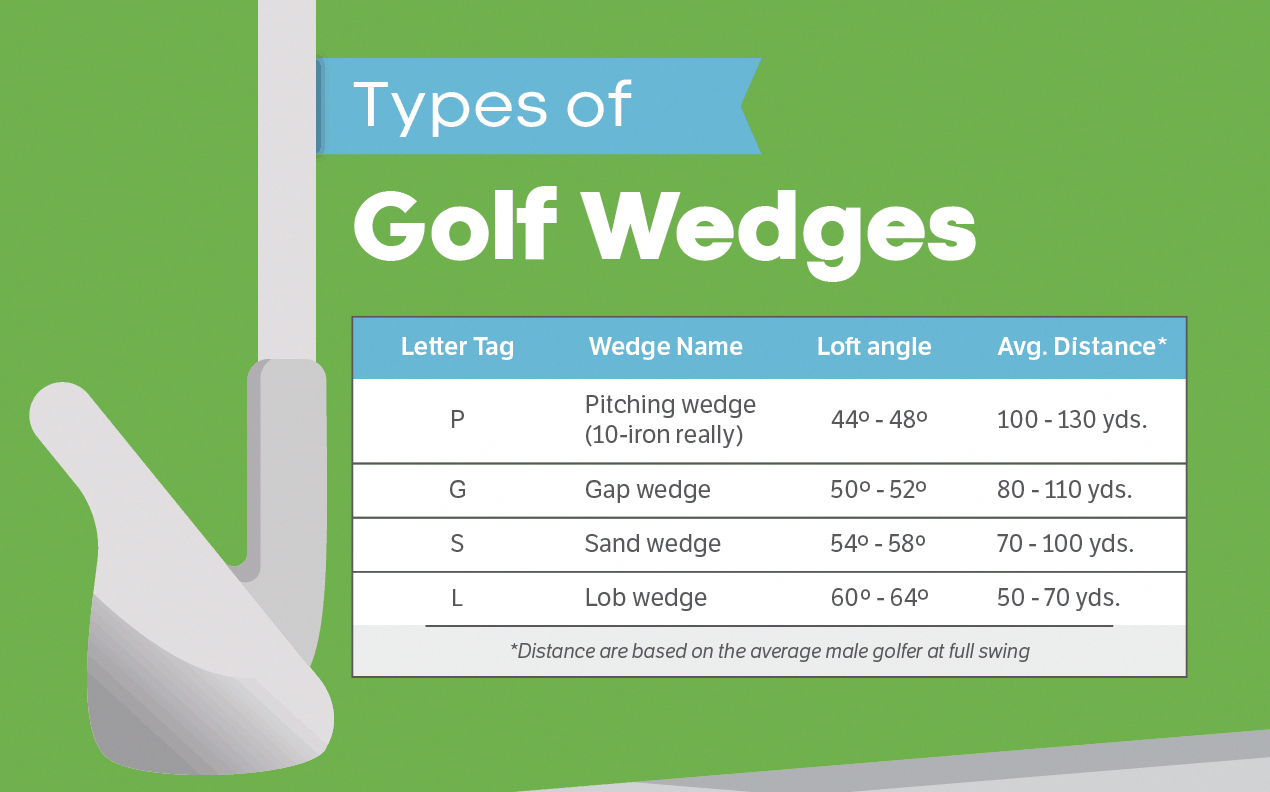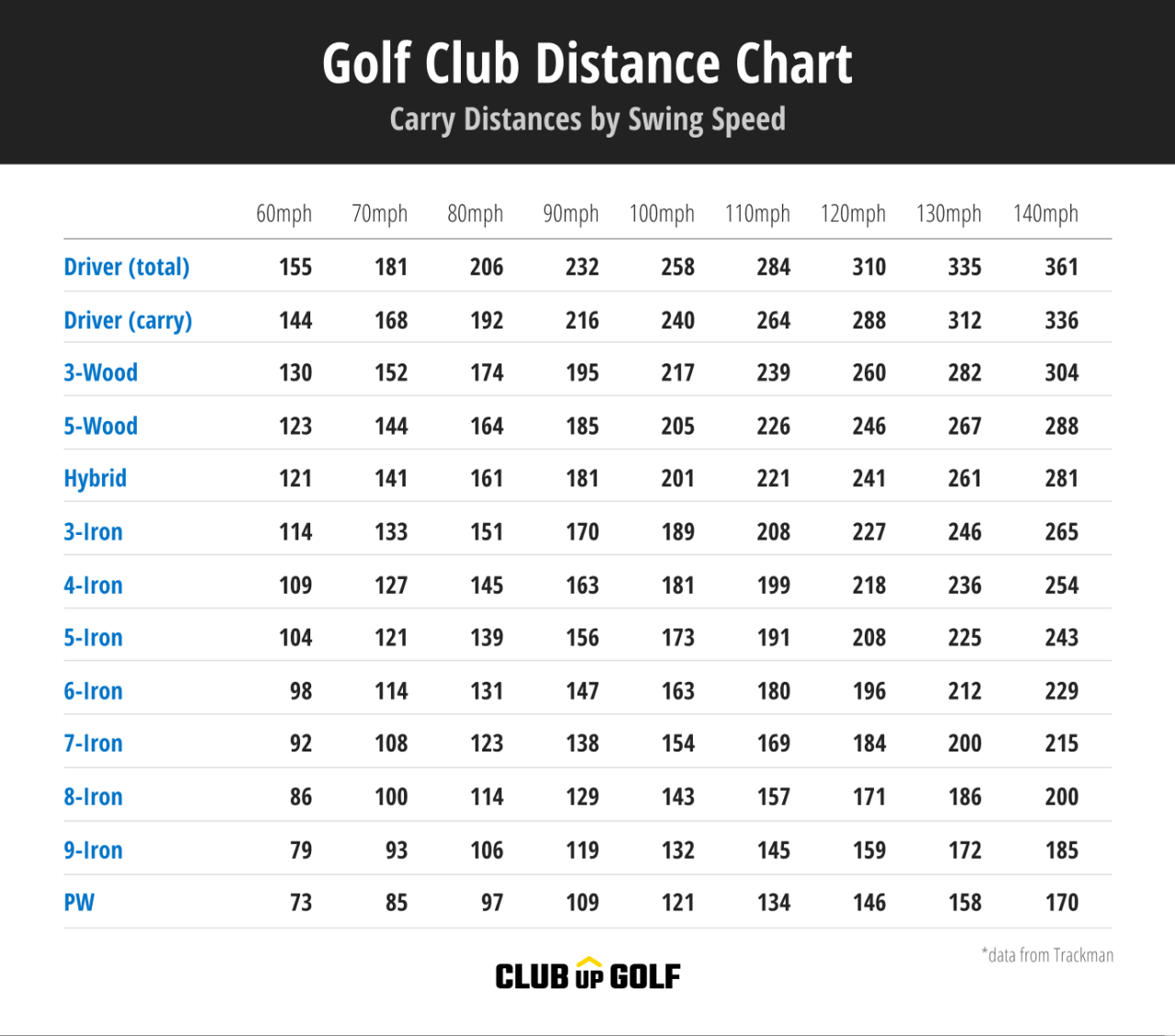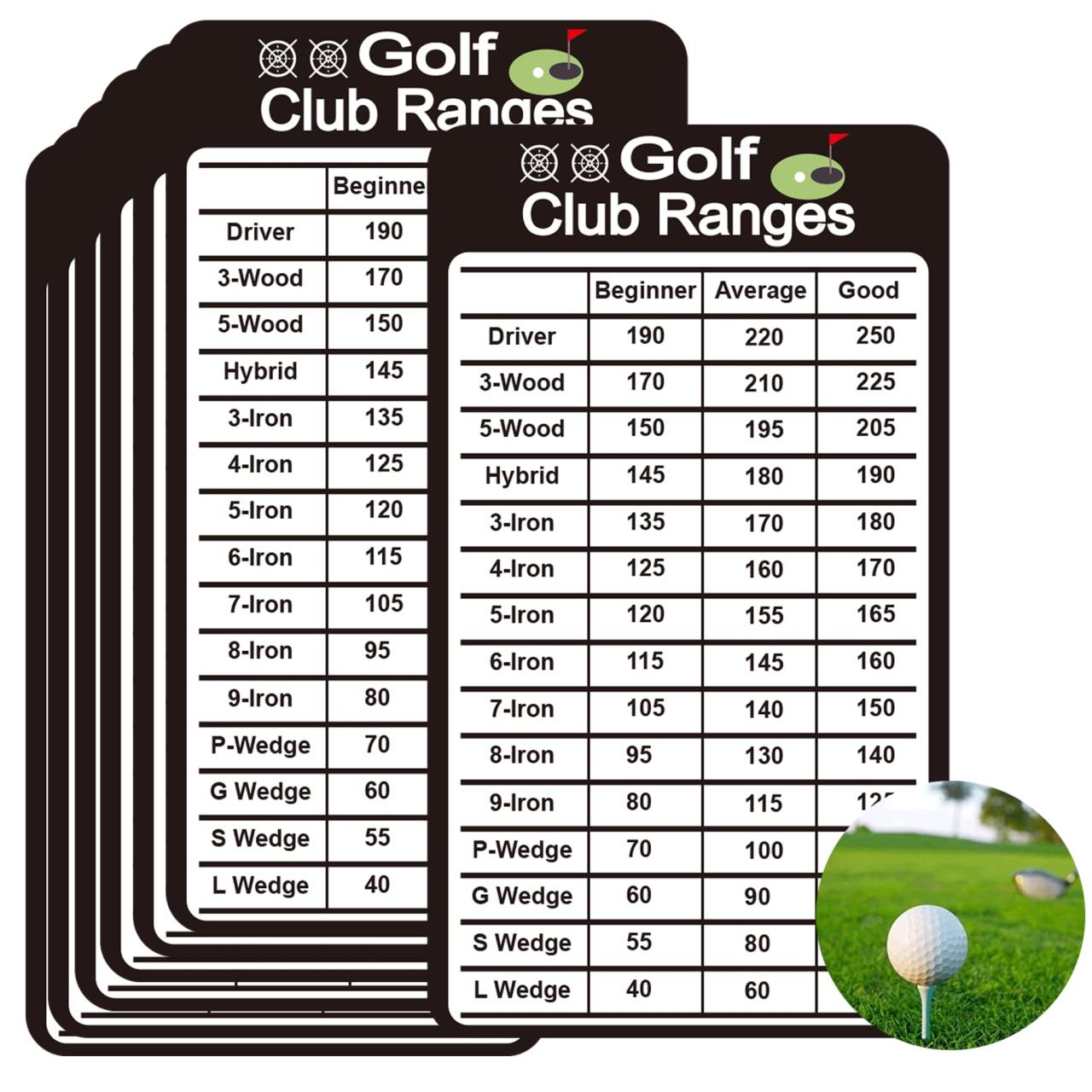Golf Club Distance Chart for Women: A Guide to Mastering Your Game is more than just a table of numbers; it’s a roadmap to unlocking your full potential on the course. For women golfers, understanding how far each club travels is crucial to making strategic decisions and improving your overall game.
By understanding the factors that influence club distance, you can develop a personalized approach to achieving consistent and accurate shots.
This guide delves into the nuances of club distance for women golfers, exploring factors like swing speed, club loft, and physical attributes. We’ll provide a comprehensive distance chart, explain how to use it effectively, and offer practical tips to improve your swing and maximize your distance.
Whether you’re a seasoned player or just starting out, this guide will empower you to take your game to the next level.
Understanding Golf Club Distance for Women
Knowing the distance your clubs travel is crucial for any golfer, especially for women who may have different swing speeds and physical attributes compared to men. This knowledge empowers you to make strategic decisions on the course and ultimately improve your game.
Factors Influencing Club Distance for Women
Several factors contribute to the distance a woman golfer can achieve with each club. Understanding these factors can help you identify areas for improvement and optimize your performance.
- Swing Speed:This is the most significant factor influencing club distance. Faster swing speeds generate more power and result in longer shots.
- Club Loft:The angle of the clubface, known as loft, determines the trajectory and distance of the ball. Higher loft clubs launch the ball higher and shorter distances, while lower loft clubs produce lower, longer shots.
- Physical Attributes:Factors such as height, strength, and flexibility can influence swing speed and clubhead speed, impacting the overall distance of your shots.
- Technique:Proper swing mechanics and technique play a crucial role in maximizing clubhead speed and achieving optimal distance.
Typical Club Distances for Women Golfers
While distances can vary based on individual factors, here’s a general guide to the typical distances women golfers can expect with different clubs:
| Club | Average Distance (Yards) |
|---|---|
| Driver | 180-220 |
| 3 Wood | 160-200 |
| 5 Wood | 140-180 |
| 2 Iron | 150-190 |
| 3 Iron | 140-180 |
| 4 Iron | 130-170 |
| 5 Iron | 120-160 |
| 6 Iron | 110-150 |
| 7 Iron | 100-140 |
| 8 Iron | 90-130 |
| 9 Iron | 80-120 |
| Pitching Wedge | 70-110 |
| Sand Wedge | 50-90 |
| Lob Wedge | 40-80 |
Using Club Distance Charts to Improve Your Game
Club distance charts are valuable tools for golfers of all skill levels. They provide a visual representation of the distances you can achieve with each club, enabling you to:
- Make Informed Club Selections:By understanding the distances you can hit each club, you can make more accurate decisions about which club to use for each shot, leading to better accuracy and consistency.
- Develop Strategic Shot Planning:Knowing your club distances allows you to plan your shots strategically, considering factors like hazards, green size, and pin placement.
- Identify Areas for Improvement:Comparing your actual distances with the chart can help you pinpoint areas where your game needs improvement, such as swing speed or club selection.
- Track Progress:As you improve your game, you can update your club distance chart to reflect your progress and monitor your development over time.
“A well-maintained club distance chart can be a golfer’s best friend, helping them to make smart decisions and improve their overall performance on the course.”
Common Golf Clubs and Their Distances for Women

Understanding the distances you can achieve with each club is crucial for successful golf. Women golfers, in particular, may experience different distances compared to their male counterparts due to variations in swing speed and physical attributes. This section delves into the average distances for common golf clubs among women golfers.
Average Distances for Common Golf Clubs, Golf club distance chart for women
The following table provides a general overview of the average distances achieved with different clubs by women golfers:| Club | Average Distance (Yards) ||—|—|| Driver | 180-220 || 3 Wood | 160-200 || 5 Wood | 140-180 || 3 Iron | 130-170 || 4 Iron | 120-160 || 5 Iron | 110-150 || 6 Iron | 100-140 || 7 Iron | 90-130 || 8 Iron | 80-120 || 9 Iron | 70-110 || Pitching Wedge | 60-100 || Sand Wedge | 50-90 || Lob Wedge | 40-80 |These distances are estimates and can vary based on factors like swing speed, club loft, and course conditions.
Factors Influencing Club Distance
Several factors contribute to the distance a golfer can achieve with each club.
Club Loft
The loft of a club refers to the angle of the clubface. Higher loft angles result in a higher launch angle, which generally leads to shorter distances. For example, a driver with a loft of 10.5 degrees will typically hit the ball further than a pitching wedge with a loft of 45 degrees.
Swing Speed
Swing speed is the speed at which the clubhead moves through impact. Faster swing speeds generally result in longer distances. The relationship between swing speed and distance is not linear, meaning that a small increase in swing speed can lead to a significant increase in distance.
For example, a 10 mph increase in swing speed could result in an extra 15-20 yards of distance.
Other Factors
Other factors can also influence club distance, including:* Ball Type:Different golf balls have different designs and materials that can affect their flight and distance.
Course Conditions
Factors like wind, temperature, and elevation can all impact how far the ball travels.
Physical Fitness
A golfer’s strength, flexibility, and overall fitness can impact their swing speed and accuracy.
Using a Golf Club Distance Chart Effectively

A golf club distance chart is a valuable tool for golfers of all levels. It provides a quick and easy way to determine the appropriate club for different shots, helping to improve accuracy and consistency. Using a distance chart effectively requires understanding how it works and how to adapt it to your individual swing.
Understanding How to Use a Distance Chart
A golf club distance chart typically lists the average distance a golfer can hit each club. The chart is based on a standard swing speed, but it’s important to remember that everyone’s swing is different. The chart serves as a starting point for selecting clubs, but it’s essential to adjust it based on your individual swing speed and other factors.
Adjusting the Distance Chart
- Swing Speed:The most significant factor affecting club distance is swing speed. If you have a faster swing speed than average, you’ll hit the ball farther than the chart indicates. Conversely, if you have a slower swing speed, you’ll hit the ball shorter.
To adjust the chart, you can either add or subtract a set number of yards based on your swing speed or use a chart specifically designed for your swing speed range.
- Wind Conditions:Wind can significantly impact shot distance. A headwind will shorten the distance of your shot, while a tailwind will increase it. You can adjust the chart by adding or subtracting yards depending on the wind speed and direction. For example, if you’re playing into a 10 mph headwind, you might need to select a club one or two clubs longer than you normally would.
- Elevation Changes:Playing uphill or downhill also affects shot distance. Shots hit uphill will travel shorter distances, while shots hit downhill will travel farther. You can adjust the chart by adding or subtracting yards based on the incline or decline of the shot.
For instance, if you’re hitting a shot uphill, you might need to choose a club one or two clubs longer than you normally would.
- Course Conditions:The condition of the course can also affect shot distance. For example, if the fairway is wet, the ball will not roll as far. You might need to adjust the chart by adding or subtracting yards depending on the course conditions.
Using a Distance Chart to Strategize on the Golf Course
A distance chart can help you make strategic decisions on the golf course. For example, you can use it to determine the best club to use for a particular shot based on the distance to the green, the position of hazards, and the wind conditions.
You can also use it to plan your approach shots and determine the best club to use to hit the green in regulation.
“The distance chart is just a guide, but it can help you make more informed decisions on the golf course.”
Professional Golfer
Improving Golf Club Distance for Women

Increasing golf club distance is a common goal for many women golfers. A longer drive can lead to more birdie opportunities, a greater sense of accomplishment, and more enjoyment on the course. While genetics and physical attributes play a role, most women golfers can significantly improve their distance with focused training and technique adjustments.
Training Plan for Increased Distance
A well-structured training plan should focus on improving swing speed and technique.
- Strength Training:Incorporate exercises that target the major muscle groups involved in the golf swing, such as the legs, core, and back. This will help build strength and power, leading to a faster swing speed. Examples include squats, lunges, deadlifts, and planks.
- Flexibility Training:Flexibility is crucial for a smooth and powerful swing. Incorporate stretches that target the muscles used in the golf swing, such as the hamstrings, hips, and back. This will help improve range of motion and reduce the risk of injury.
- Swing Mechanics:Focus on improving swing technique, including grip, posture, backswing, downswing, and follow-through. A proper swing will maximize power and distance while minimizing effort. Working with a golf professional can help identify and correct swing flaws.
Benefits of Golf Simulators and Professional Lessons
Using a golf simulator and taking lessons from a golf professional can significantly enhance distance.
- Golf Simulators:Simulators provide instant feedback on swing speed, launch angle, and ball flight, allowing golfers to track their progress and identify areas for improvement. They also offer a controlled environment to practice without the pressure of being on the course.
- Professional Lessons:Golf professionals can provide personalized instruction, identify swing flaws, and offer customized drills and exercises to improve technique. They can also help golfers develop a swing that is both powerful and efficient.
Practical Tips and Exercises
- Focus on the Downswing:The downswing is where the power in the golf swing is generated. Focus on generating a powerful and controlled downswing, ensuring the clubhead is moving through the impact zone at its fastest speed.
- Practice Proper Weight Transfer:Efficient weight transfer from the back foot to the front foot during the downswing is crucial for generating power. Practice drills that emphasize weight transfer, such as the “one-legged drill” or the “hip turn drill.”
- Improve Grip:A proper grip allows for maximum clubhead speed and control. Ensure a firm but not too tight grip, with the hands positioned correctly. Experiment with different grip variations to find what works best for you.
- Develop a Consistent Swing Plane:A consistent swing plane ensures the clubhead travels on the correct path through impact, maximizing distance and accuracy. Practice drills that emphasize swing plane consistency, such as the “mirror drill” or the “rope drill.”
- Practice with a Purpose:Don’t just hit balls aimlessly. Set goals for each practice session and focus on specific areas for improvement. Track your progress and make adjustments as needed.
FAQ Compilation: Golf Club Distance Chart For Women
What is the best way to use a golf club distance chart?
A golf club distance chart should be used as a guide, not a rigid rule. It’s important to consider your personal swing speed, course conditions, and the specific shot you’re trying to make. Experiment with different clubs and distances to find what works best for you.
How can I improve my swing speed to hit the ball further?
Focus on proper technique and strengthening your core muscles. A qualified golf instructor can help you develop a more efficient swing that generates more power. Practice regularly to build muscle memory and improve your swing speed over time.
What is the difference between a driver and a fairway wood?
A driver is designed for maximum distance off the tee, while fairway woods are used for longer shots from the fairway. Drivers have a larger clubhead and a more open face, while fairway woods have a smaller clubhead and a more closed face.
Fairway woods are typically used for shots where accuracy is more important than distance.
What is the role of loft in golf club distance?
Loft is the angle of the clubface, and it determines the trajectory of the ball. A higher loft results in a higher ball flight and shorter distance, while a lower loft results in a lower ball flight and longer distance.
The loft of each club is designed to provide optimal performance for different shots.

